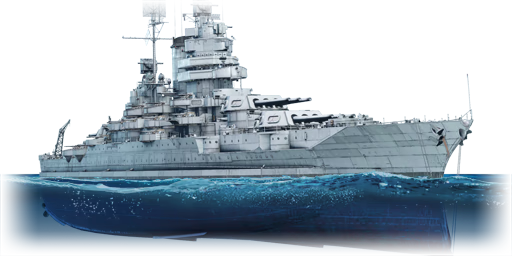USS Mississippi was the second of three New Mexico-class ships. The New Mexicos would be overall similar to the preceding Pennsylvania-class, with the notable addition of longer barreled 50-calibre guns and a new turbo-electric drive. Laid down in April 1915, Mississippi would be commissioned in December 1917; this would leave her crew training during the remainder of the First World War, seeing no action in this conflict. She would be modernized during the interwar period, giving her more powerful engines which increased her top speed past the typical 21.0 kn found on Standard-type battleships. USS Mississippi would see extensive action throughout WW2, with her first notable action taking place in the Aleutians. She would go on to participate in the Gilbert and Marshall Islands campaign, before moving on the Peleliu and later the Philippines. She would take part in the Battle of Surigao Strait, however with her older radar she would have significant difficulty acquiring targets, firing only one salvo during the engagement, after the order was given to cease fire. However, this gives her the distinction of being the last battleship to fire on another battleship, ever. She would then continue supporting operations in the Philippines before moving to shell Okinawa, taking multiple kamikaze hits during this timeframe. She would be present in Tokyo Bay for the signing of Japanese surrender. Postwar, she would be converted first into a gunnery training ship, and then into a test ship for new weapons, notably testing the US Navy's first ship-to-air missile. She would serve in this capacity until being decommissioned and sold for scrap in 1956, being broken up in 1957.
USS Mississippi was introduced as a reward for the 2023 Winter Extreme event, the first rank 6 event ship. Compared to earlier battleships such as the USS Nevada or USS Arizona she is slightly faster with a similar armour scheme, and she is also the first USN Battleship in War Thunder with the long barreled 14-inch gun, giving her greater penetration as well. This does come with the downside of only having the earlier 5-inch 25 calibre anti-aircraft gun instead of the later 38 calibre dual purpose guns, making her less effective against lightly armoured ships such as light cruisers and destroyers. Overall a solid battleship focused more on capability against other capital ships, with strong anti-aircraft ability as well.












